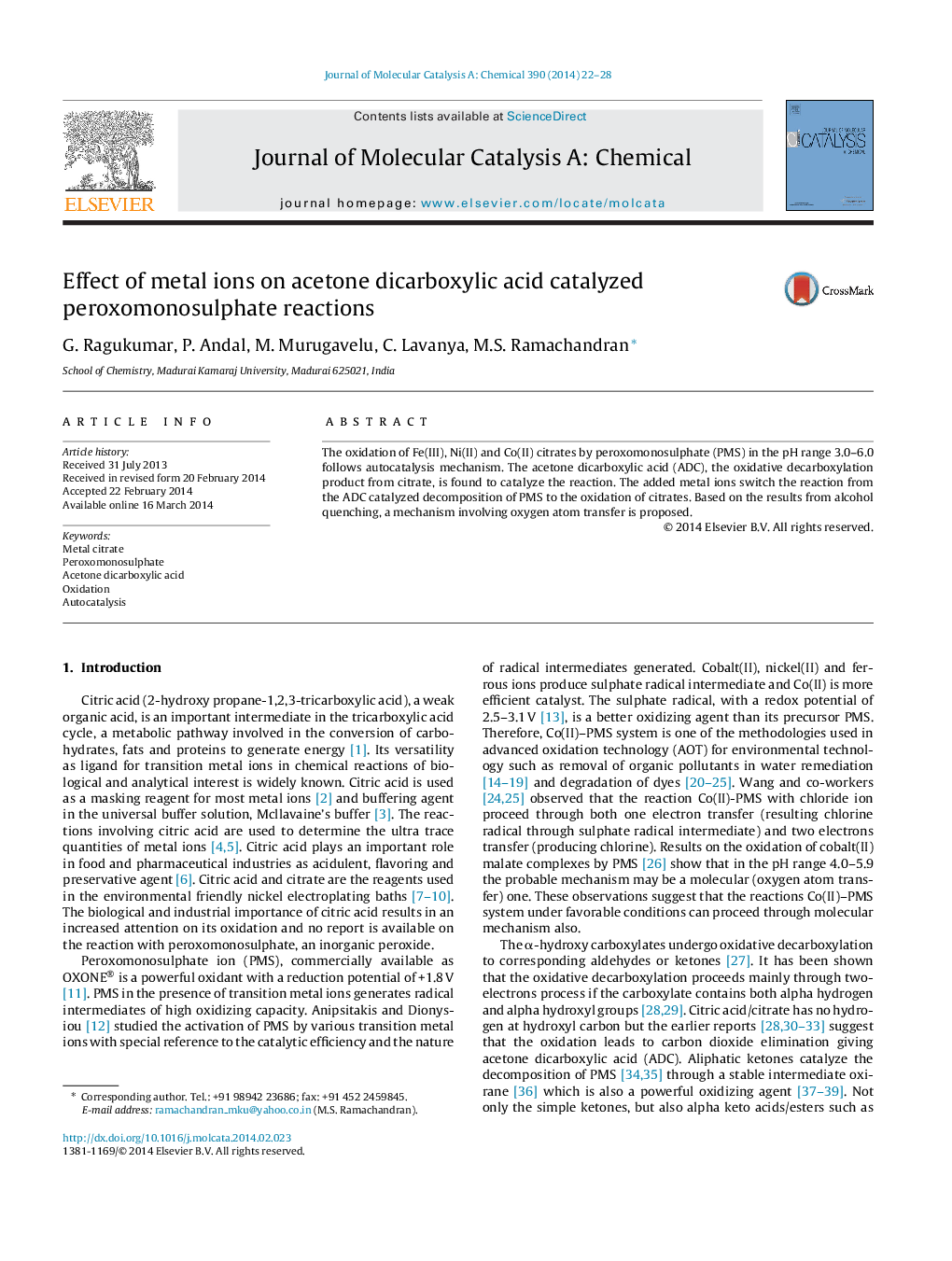| کد مقاله | کد نشریه | سال انتشار | مقاله انگلیسی | نسخه تمام متن |
|---|---|---|---|---|
| 65513 | 48394 | 2014 | 7 صفحه PDF | دانلود رایگان |
• A kinetic study on Fe(III), Ni(II) and Co(II) citrates by peroxomonosulphate ion(PMS) in the pH range 3.0–6.0.
• The citrate is oxidized to acetone dicarboxylic acid (ADC).
• Acetone dicarboxylic acid catalyzes the oxidation of citric acid by PMS and hence the reactions are auto catalytic.
• In the absence of metal ions, ADC catalyzes the decomposition of PMS and no oxidation of citric acid.
• A molecular mechanism involving oxygen atom transfer from PMS.
The oxidation of Fe(III), Ni(II) and Co(II) citrates by peroxomonosulphate (PMS) in the pH range 3.0–6.0 follows autocatalysis mechanism. The acetone dicarboxylic acid (ADC), the oxidative decarboxylation product from citrate, is found to catalyze the reaction. The added metal ions switch the reaction from the ADC catalyzed decomposition of PMS to the oxidation of citrates. Based on the results from alcohol quenching, a mechanism involving oxygen atom transfer is proposed.
The oxidation of Fe(III), Ni(II) and Co(II) citrates, in the pH range 3.0–6.0, by peroxomonosulphate (PMS) gives acetone dicarboxylic acid (ADC) which in turn catalyzes the oxidation reaction. ADC in simple citric acid/citrate ion catalyzes only the decomposition of PMS. Molecular mechanism involving oxygen atom transfer from PMS is proposed.Figure optionsDownload high-quality image (71 K)Download as PowerPoint slide
Journal: Journal of Molecular Catalysis A: Chemical - Volume 390, August 2014, Pages 22–28
